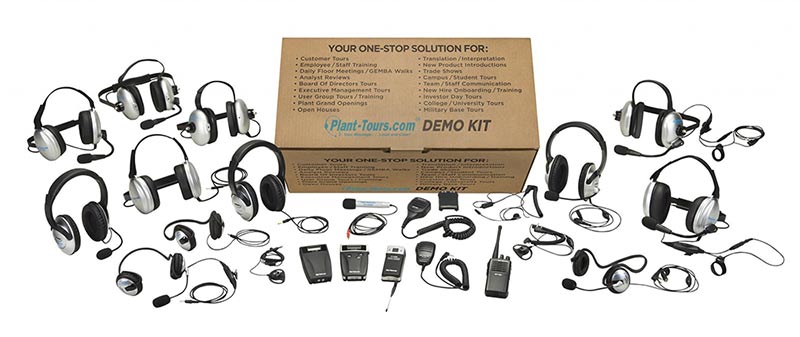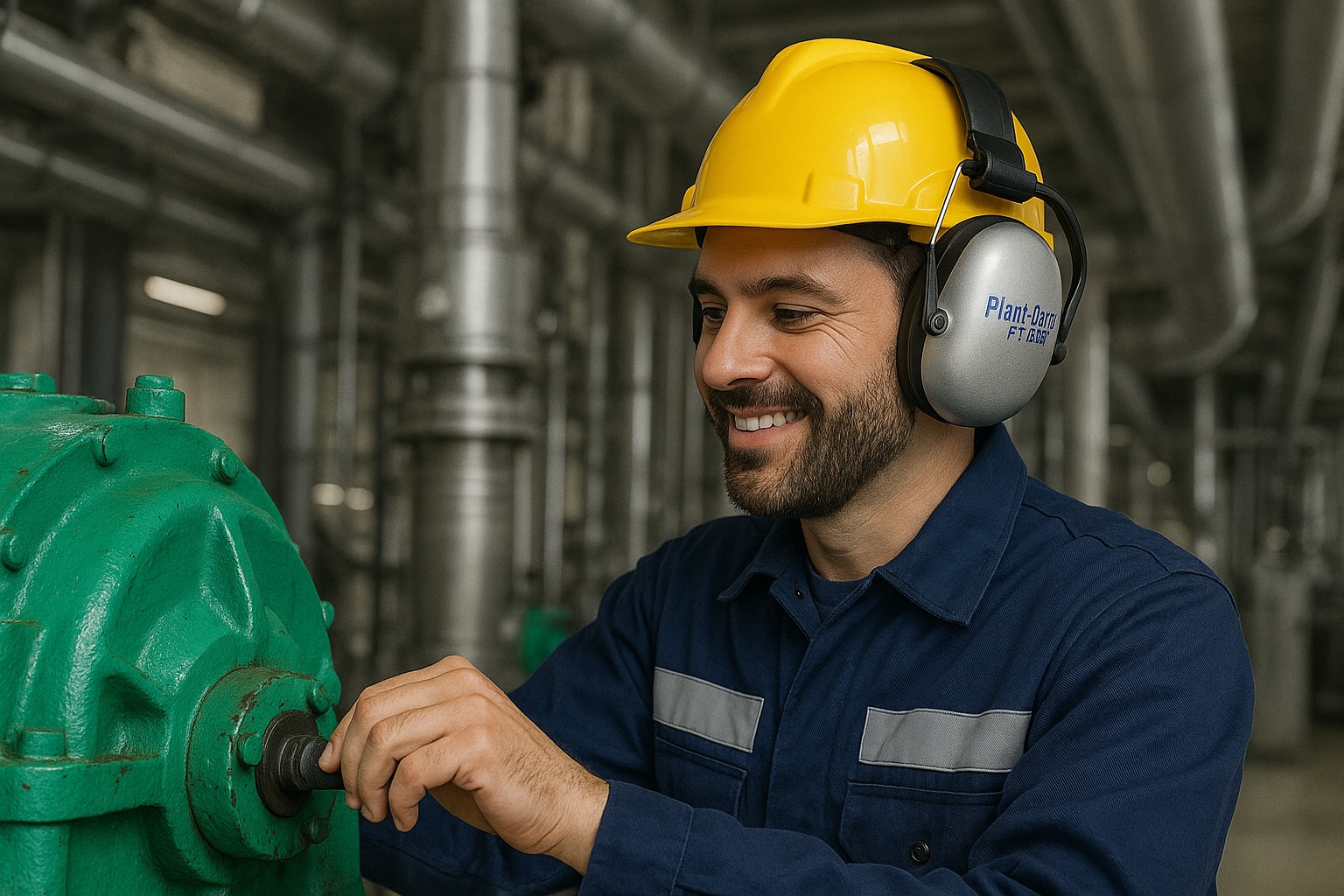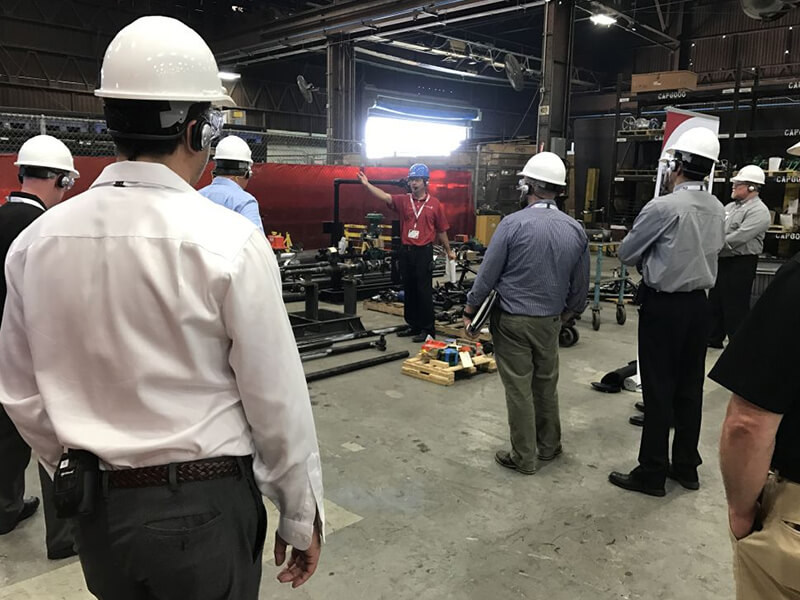Communication in manufacturing facilities is an important consideration in any setting. However, in high-noise environments, ensuring that you are able to pass on clear instructions is also a critical safety issue, with miscommunication potentially leading to accidents or costly mistakes.
As a consultant to numerous Fortune 500 companies within the manufacturing sector, I have seen firsthand how the negative impacts of miscommunication can affect staff and visitors both in the short and long term. So, ensuring that you have the right equipment to deliver facility tours, train and onboard staff, co-ordinate your teams, or streamline logistics must be a priority.
Top 3 High-Noise Headsets for your Facility
Plant-Tours has helped many manufacturing facilities find the right communication headsets for noisy work environments, and here we explore my top 3 picks. Read on to learn more.
MT-250 Max-Noise Headset

The innovative MT250 headset combines comfort and rugged durability for demanding, high-noise environments. Its full around-the-ear seal ensures superior ear protection, and compatibility with hard hats or bump caps makes it ideal for manufacturing facilities or site work.
Equipped with a lockable push-to-talk (PTT) feature, the MT-250 allows tour guides, team leaders, and users to speak without holding the button, providing complete freedom of movement. As a 24 NRR rated headset, our clients at Smithfield Foods were particularly impressed by the clear audio quality during training and onboarding sessions in high-noise areas.
MT-200 High-Noise Headset
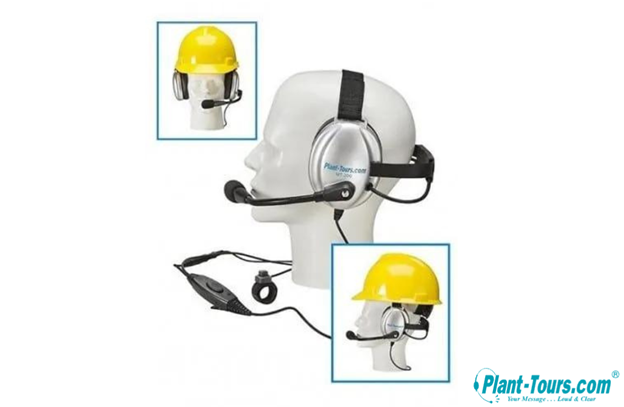
The MT-200 High Noise Headset boasts a 14 NRR rating packaged within a comfortable, lightweight (12 oz), low profile design. However, despite its sleek styling, the MT-200 is built to last in even the most demanding environments.
Having supplied Nestle with this system, they appreciated that the MT-200 allowed participants to converse and ask questions during facility walk-throughs, Gemba walks, new hire training, and staff communication sessions. Additionally, the MT-200 was used for VIP guests, replacing older and bulkier headsets that had become impractical and uncomfortable.
MT-370 Moderate-High Noise Headset

The MT-370 High Noise Headset is another sleek and stylish solution for environments requiring moderate to high noise reduction. Featuring full around-the-ear coverage, an adjustable padded headband, and ultra-soft vinyl earmuffs, it is also extremely comfortable to wear, even over long periods.
Our clients report that the MT-370 is ideal for areas where noise hinders clear communication but is unlikely to cause hearing damage. Additionally, the push-to-talk option makes it an excellent choice in areas where freedom of movement is crucial.
Features of the Best Communication Headsets for Noisy Environments

High noise levels prevent normal conversations from taking place and also present long term health risks to employees’ ability to hear. Cell phones aren’t durable enough or set up for ease of use in an industrial setting where hands free communication and awareness of one’s surroundings is necessary. Bluetooth headsets are not rugged enough to allow reliable connectivity under these conditions.
So, with these issues in mind, I believe that you should prioritize these features when looking for a communication headset for noisy environments.
- Microphone with ANC — A good noise-canceling microphone ensures that your voice is transmitted clearly while using active noise canceling to invert soundwaves and cancel them out.
- Comfort and Fit — Cushioned ear pads and adjustable headbands are vital for all-day wear.
- Battery Life — For wireless headsets, long battery life is crucial to avoid frequent recharging.
- Durability — Robust construction is essential, especially in physically demanding environments like construction sites.
- Radio Communications — Rather than Bluetooth or other consumer technologies, radio communication should be prioritized in high-noise environments.
Where Should High-Noise Headsets be Used?
There are many applications for high-noise headsets, and they can be used in any setting where communication may be difficult due to high sound levels caused by machinery, vehicles, or even other people.
OSHA requires any work environment where noise levels are over 85 decibels to implement a hearing conservation program. This may involve equipment such as earplugs or other
hearing protection, as well as high-noise headsets where necessary.
Below, we look at some of the settings that high-noise headsets are commonly used:

Construction Sites
Construction sites are often loud and feature dangerous machinery and vehicles posing significant risks to everyone on site. High-noise headsets should allow for clear and uninterrupted communication among workers, protecting hearing while still ensuring individuals maintain situational awareness.
Factories & Industrial Environments
Loud operational noises from machinery, forklifts, delivery trucks, and power stations can impair hearing and potentially damage ears over long periods. High-noise headsets improve safety by allowing workers and visitors to hear critical instructions.
Airports and Air Traffic Control
Clear communication between ground staff and pilots is critical, as well as ensuring that ancillary workers can coordinate despite constant noise from aircraft and equipment. High-noise headsets help enable team communication in these challenging environments.
Transportation Hubs
For clear communication in busy bus or train stations, as well as in logistics centers and other distribution terminals, high-noise headsets help improve coordination among staff in high-traffic areas.
Warehouses
Ensuring operational efficiency and safety in warehouses is a critical consideration. High-noise headsets facilitate communication in these environments where constant machinery noise impairs hearing.
How Do Noise-Canceling Headsets Work?
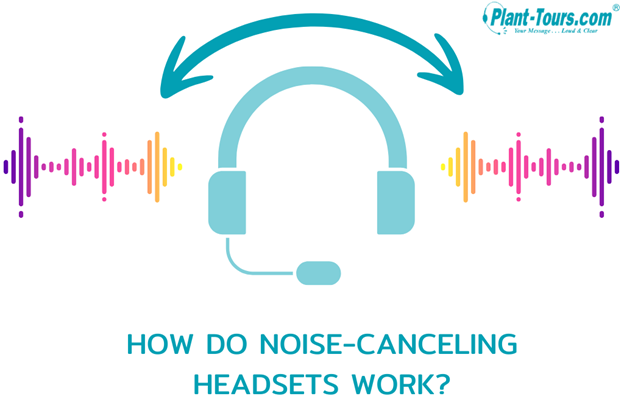
High-noise headsets are essentially NRR rated two-way radio headsets with noise-canceling microphones. They work using both active and passive noise canceling technologies.
Active Noise-Cancellation
- Microphones — High-quality microphones pick up external sounds. They often also include pop shields to prevent wind noise and other distortions.
- Digital Signal Processing (DSP) — The captured sounds are analyzed by a DSP microchip within the headset.
- Inverted Sound Waves — The DSP generates sound waves that are the exact inverse (or opposite) of the external noise.
- Sound Wave Cancellation — These inverse sound waves are played through the headset’s speakers, effectively canceling out the external noise by destructive interference.
Passive Noise Isolation
- Design and Materials — The headset’s design, such as around-the-ear cups and padded seals, physically blocks external sounds from entering the ear.
- Sealing — High-quality materials and tight sealing around the ears help to isolate the listener from ambient noise.
The Importance of NRR When Choosing High-Noise Headsets
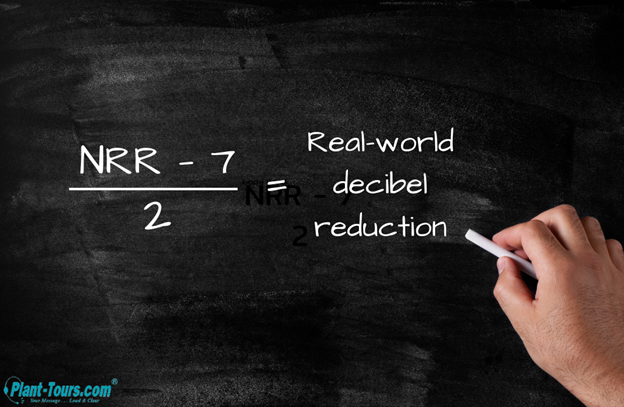
Before selecting a high-noise headset you need to understand NRR, or the Noise Reduction Rating. You’ll see this rating used in any noise reducing headset, earbuds, or other noise canceling device.
All noise is measured in decibels, or dB. However, the NRR number is not the amount of dB you subtract from background noise to determine how well the headphones provide hearing protection.
Instead, there is a simple mathematical formula for determining how well the headphones work. This formula is computed by taking the NRR number listed on the headphones, subtract 7, then divide by 2.
For example, you have a set of headphones that have an NRR number of 33 (in the product specs it will be listed as 33 NRR). You will then plug the number into the mathematical formula. So you’ll take 33, subtract 7 (26), and divide it by 2, which comes out to 13.
This is the number you remove from the surrounding decibel level. So, if you have headphones of 33 NRR and are in noisy environments where the sound level is at 100 dB, you’ll remove 13 dB from the loud environments, giving you a total dB exposure of 87.
No matter the NRR number listed on the headphones, you will use this specific mathematical formula to identify the corresponding dB removal. It is a good idea to measure the dB level to determine the best high-noise headsets in your facility.
Communication Headsets for Noisy Environments — The Final Word
There are plenty of benefits of noise-canceling headphones when used in loud environments, and in consultation with our clients, I have seen how they can improve communication, increase safety, and help deliver effective plant and facility tours while also providing hearing protection.
For more information, taking your factory tours to the next level while remaining comfortable, speak with our experts today.

